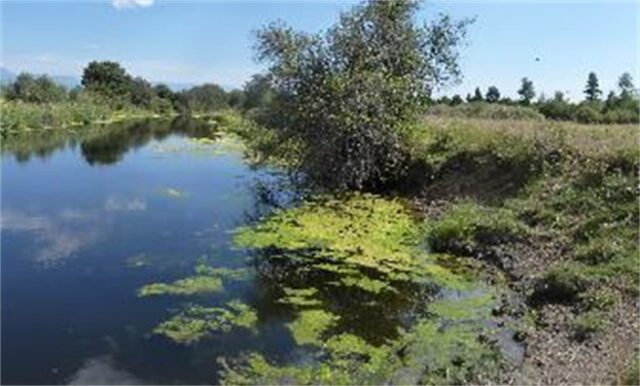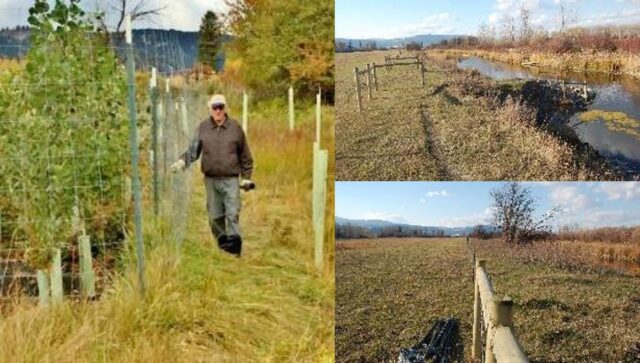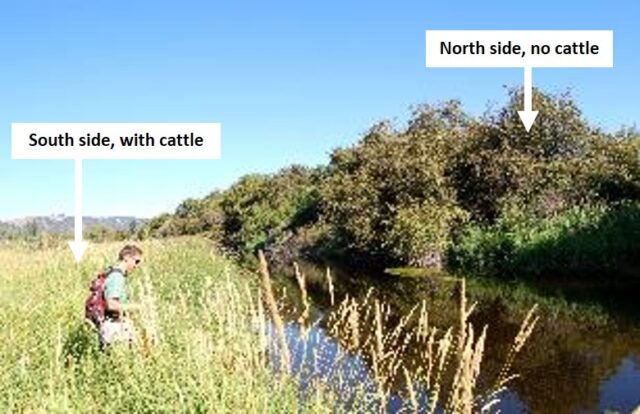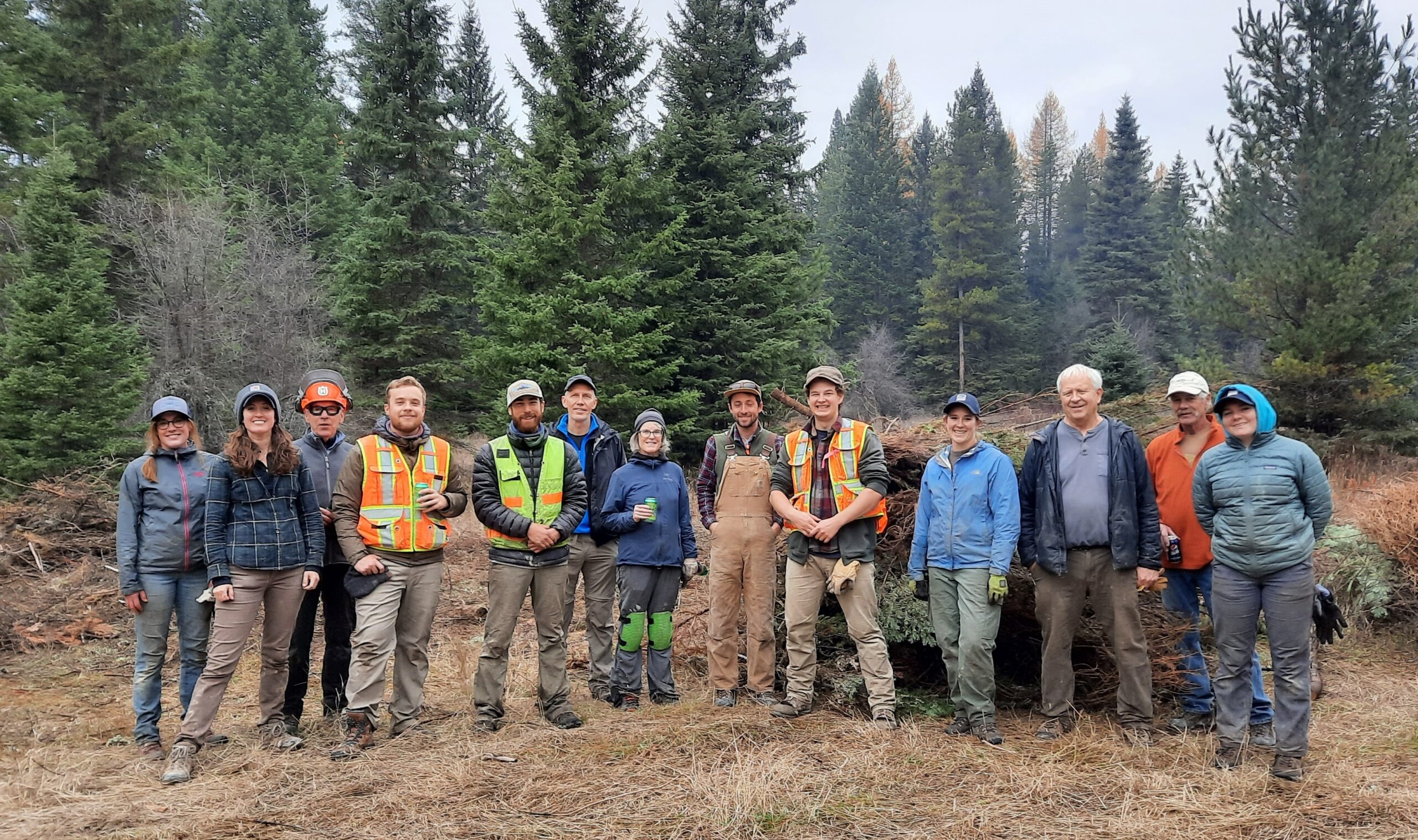Each spring, Krause Creek rages through Don and Mary Garner’s property with an unnatural hydrology…
Ashley Creek Restoration Project: Creating a Ripple Effect
Dick Siderius was born and raised on a small farm in the Lower Valley area of Flathead County. Ashley Creek flows through his property before joining with the Flathead River. The Siderius family has grazed and watered cattle along this section of Ashley Creek for decades. In 1964, a flood took out a bridge on the Siderius’ property that provided access to both sides of the creek. As a result, no cattle could access the north side of Ashley Creek after 1964. Over the years, Dick noticed that the vegetation on the north bank of the creek grew and filled in along the creek where it had previously been grazed. The contrast between the two banks was unmistakable.
Over time, land use and development have impacted Ashley Creek along its entire channel length, from its origin at the outlet of Ashley Lake, to its confluence with the Flathead River. Ashley Creek is considered impaired by the Montana Department of Environmental Quality (DEQ) because of high water temperatures and pollution by nutrients and sediment. DEQ reports that water temperature is too warm to support native fish species, nutrient pollution has led to excessive algae growth and low dissolved oxygen, and higher than normal streambank erosion contributes excessive sediment. Because Ashley Creek is considered an impaired stream, there is opportunity for property owners along the creek to tap into local and state funding to help make improvements in water quality.

Algae growth and a failing bank along Ashley Creek.
Dick Siderius recognized that that there was an opportunity to help improve water quality in Ashley Creek, and by doing that, ultimately improve water quality in Flathead Lake. Dick serves as a board member on the Flathead Lakers, so this issue hit close to home.
“This is one step to protect the water quality of Flathead Lake. That is a big concern in my mind.” – Dick Siderius
In 2015, Dick connected with the River Steward Program to develop a plan for restoration. The River Stewardship Program is a partnership that includes the Flathead Lakers, MT Fish, Wildlife & Parks (FWP), Natural Resources Conservation Service (NRCS), and Flathead Conservation District (FCD). They conducted a plant survey on both sides of the creek, delineated a proposed livestock fence, and discussed watering options for the cows. With funding from DEQ and FWP, they installed 2,736 feet of wildlife-friendly fence and a water gap. They also organized planting events and recruited 15 volunteers to assist with project installation and maintenance.

Dick Siderius stands next to one of the fenced plantings on his property (left). On the right, the water gap (top) and riparian fence (bottom) control access by livestock to Ashley Creek.
The project restored over a half mile along Ashley Creek. Hundreds of plantings were installed and will shade the stream, trap sediment, and filter nutrient pollution. The fence now prevents livestock and manure from entering the creek and encourages plant regeneration, but still allows livestock to water in the creek via the water gap. Fencing the riparian area greatly reduced the direct disturbance of the banks from trampling by cattle, and grasses were already visibly denser along the banks after only one growing season. A restored, mature forest along this half-mile stretch could help reduce instream maximum temperatures by 1°F, with likely much greater localized effects.
Perhaps the greatest potential for water quality improvement in Ashley Creek is by the ripple effect. Dick Siderius sees his project’s effectiveness and understands the importance of his project’s contribution for clean water and reducing water temperatures in Ashley Creek. But the story doesn’t end there. The River Steward Program partners are reaching out to neighboring landowners to encourage them to also restore riparian buffers to make a significant difference long term. The hope is to demonstrate potential and generate interest by celebrating the success of the restoration project on the Siderius property.
If you’re interested in learning more about improving water quality on your property, reach out to the Flathead Conservation District for more information. Financial and technical assistance is available for projects that improve natural resources and protect water quality.



